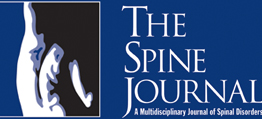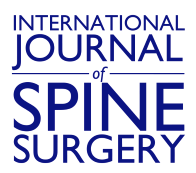
Abstract
BACKGROUND CONTENT: Subsequent surgical procedures in the cervical spine may cause additional risks, which decrease the cost effectiveness and success of study treatment. Previous studies have shown that TDR has lower rates of subsequent surgical intervention than ACDF up to 5 years. However, due to possible long-term risks following treatment with ACDF and TDR, such adjacent segment degeneration, analysis of subsequent surgeries at longer-term follow-up is necessary to evaluate ongoing treatment success.
PURPOSE: To evaluate the rate f subsequent surgical interventions in one and tow-level TDR and ACDF patients up to 7 years after treatment.
STUDY DESIGN/SETTING: The study was conducted as part of a prospective, randomized multicenter concurrently controlled FDA IDE clinical trial conducted across 24 sites in the US.
PATIENT SAMPLE: The patient population consisted of 575 patients randomized 2:1 to receive TDR or ACDF at one or two levels. The one-level arm included 164 TDR and 81 ACDF patients. The two-level arm included 225 TDR and 105 ACDF patients. Inclusion criteria included a diagnosis of symptomatic cervical degenerative disc disease at one or two contiguous levels and no history of previous operations on the cervical spine.
OUTCOME MEASURES: All index and adjacent level surgeries were documented as part of the study. Any removal, revision, reoperation or supplemental fixation was classified as a device failure. Some patients had a subsequent surgery at both the index and adjacent levels.
METHODS: TDR patients were treated using the Mobi-C© artificial disc (LDR Spine). ACDF patients were treated with allograft, plate and screw instrumentation (Medtronic or Depuy). Subsequent surgeries were reported out to 7 years. Fisher’s exact test was used to determine significance between Kaplan-Meier survival curves.
RESULTS: Through 7 years, 84 subsequent surgeries occurred in 68 patients (TDR: 30(7.7%) vs ACDF: 38 (20.4%); p,.0001). Initial causes of subsequent surgery amount TDR patients were adjacent level disease (13), radiculopathy (40, neck pain (3), device placement/attachment (3), spondylosis (2), stenosis (2), hematoma (2) and osteolysis (1). Among ACDF patients, the causes of secondary surgery were adjacent level disease (17), pseudoarthrosis (13), hematoma (3), radiculopathy (1), spondylosis (1), stenosis (1), mispositioned screws ((1), and trauma (1). Twelve patients (6 TDR, 6 ACDF) had multiple subsequent surgeries. At 7 years, device-related subsequent surgeries were significantly lower for the TDR vs the ACDF at both one-level (3.0% vs 12.3%; p=.008) and two-levels (4.9% vs 16.2%; p=.001). Similar results were found for all index level subsequent surgeries in one-level (3.7% vs 13.6%; p=.007) and two-level (5.8% vs 18.1%; p=.001). treatment arms. Subsequent surgeries at adjacent levels were also lower for one-level TDR (3.7% vs 13.6%; p=.007) and two-level TDR (4.9% vs 11.4%, p=.04) compared to ACDF. Survival curves show a significantly higher freedom from subsequent surgery for the one-level TDR compared to the ACDF (93.2% vs 77.4%; p=.006) at 7 years. Similarly, two-level TDR had a significant higher freedom from subsequent surgery than ACDF (90.8% vs 77.6%; p=.006).
To Read The Full Article Click Here





